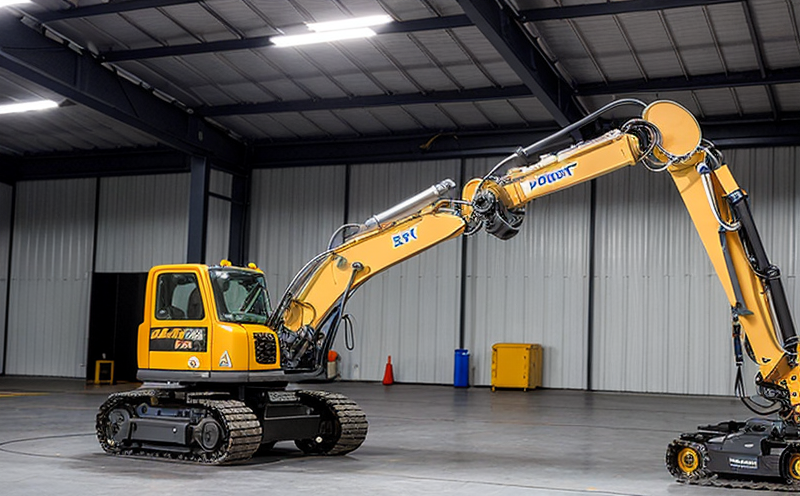Evaluating the impact of high torque on the lifespan of robotic joints
Evaluating the Impact of High Torque on Robotic Joints Ensuring Long-Term Performance and Reliability
In todays rapidly evolving industrial landscape, robotics has become an indispensable tool for businesses seeking to optimize efficiency, productivity, and precision in various manufacturing processes. However, as robotic systems continue to gain prominence, a critical challenge has emerged ensuring the longevity of their mechanical components. Among these components, robotic joints are particularly susceptible to wear and tear, especially when subjected to high torque loads. In this article, well delve into the significance of evaluating the impact of high torque on the lifespan of robotic joints and explore how our laboratory service at Eurolab can provide businesses with actionable insights to prolong their equipments lifespan.
What is Evaluating the Impact of High Torque on Robotic Joints?
Evaluating the impact of high torque on robotic joints involves assessing the effects of excessive rotational forces on the joints mechanical components, including bearings, gears, and shafts. This analysis enables businesses to identify potential weaknesses and vulnerabilities in their equipment, ensuring that they can take proactive measures to prevent premature wear and extend the lifespan of their robotic systems.
Why is it Essential for Businesses?
In todays competitive industrial landscape, minimizing downtime and maximizing equipment efficiency are critical factors for business success. Evaluating the impact of high torque on robotic joints helps businesses
Reduce Downtime By identifying potential issues before they occur, companies can schedule maintenance and repairs during scheduled downtimes, minimizing lost production time.
Increase Productivity Well-maintained robotic systems operate at optimal levels, ensuring consistent quality outputs and meeting tight production deadlines.
Lower Maintenance Costs Regular assessments help businesses prioritize maintenance tasks, reducing unnecessary repairs and extending the lifespan of their equipment.
Improve Equipment Reliability By understanding the effects of high torque on their robotic joints, companies can implement targeted improvements to enhance overall system reliability.
Key Benefits of Using Our Laboratory Service
At Eurolab, our team of experienced engineers and technicians provides a comprehensive evaluation of the impact of high torque on robotic joints. The benefits of partnering with us include
Accurate Assessments Our laboratory service utilizes state-of-the-art equipment and expert analysis to provide precise assessments of your robotic joints condition.
Data-Driven Insights We deliver actionable data, enabling businesses to make informed decisions about maintenance, repairs, or upgrades.
Customized Solutions Our team works closely with clients to develop tailored recommendations for improving equipment performance and lifespan.
Scalable Testing Capabilities From small-scale assessments to large-scale testing programs, our laboratory service can accommodate a range of business needs.
How Does the Evaluation Process Work?
At Eurolab, we employ a structured evaluation process to assess the impact of high torque on robotic joints. The following steps are involved
Sample Collection We collect samples of your robotic joint components for analysis.
Laboratory Testing Our team conducts thorough laboratory testing, using specialized equipment to simulate real-world operational conditions.
Data Analysis We analyze the results, identifying areas of wear and potential vulnerabilities in the joints mechanical components.
Reporting and Recommendations A comprehensive report is provided, outlining our findings and recommending targeted improvements for extending the lifespan of your robotic joints.
Frequently Asked Questions (FAQs)
Here are some common questions we receive about evaluating the impact of high torque on robotic joints
Q What types of robots can be evaluated?
A Our laboratory service can accommodate a range of robotic systems, including industrial robots, collaborative robots, and robotic arms.
Q How do I prepare my equipment for evaluation?
A Please ensure that your robotic joint components are representative of the systems current operational state. Any modifications or upgrades should be noted in advance to ensure accurate assessments.
Q What is the turnaround time for laboratory testing and analysis?
A Our team strives to provide results within a few weeks, depending on the complexity of the evaluation and the availability of resources.
Q How can I schedule an evaluation with Eurolab?
A Contact us through our website or by email to discuss your specific needs and arrange for a consultation with one of our experienced engineers.
Conclusion
In todays fast-paced industrial environment, businesses must prioritize equipment performance, reliability, and lifespan. Evaluating the impact of high torque on robotic joints is an essential step in maintaining operational efficiency and minimizing downtime. By partnering with Eurolab, companies can access expert analysis, actionable insights, and customized recommendations to ensure their robotic systems continue to operate at optimal levels. Contact us today to learn more about our laboratory service and schedule your evaluation.




